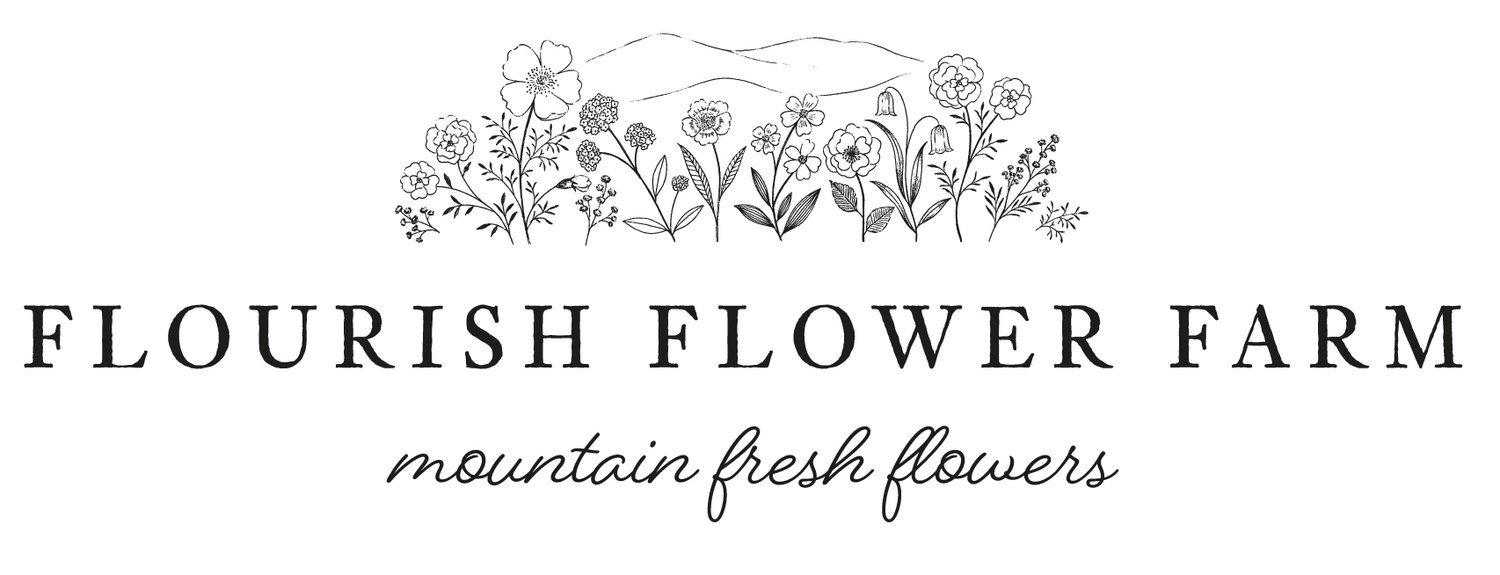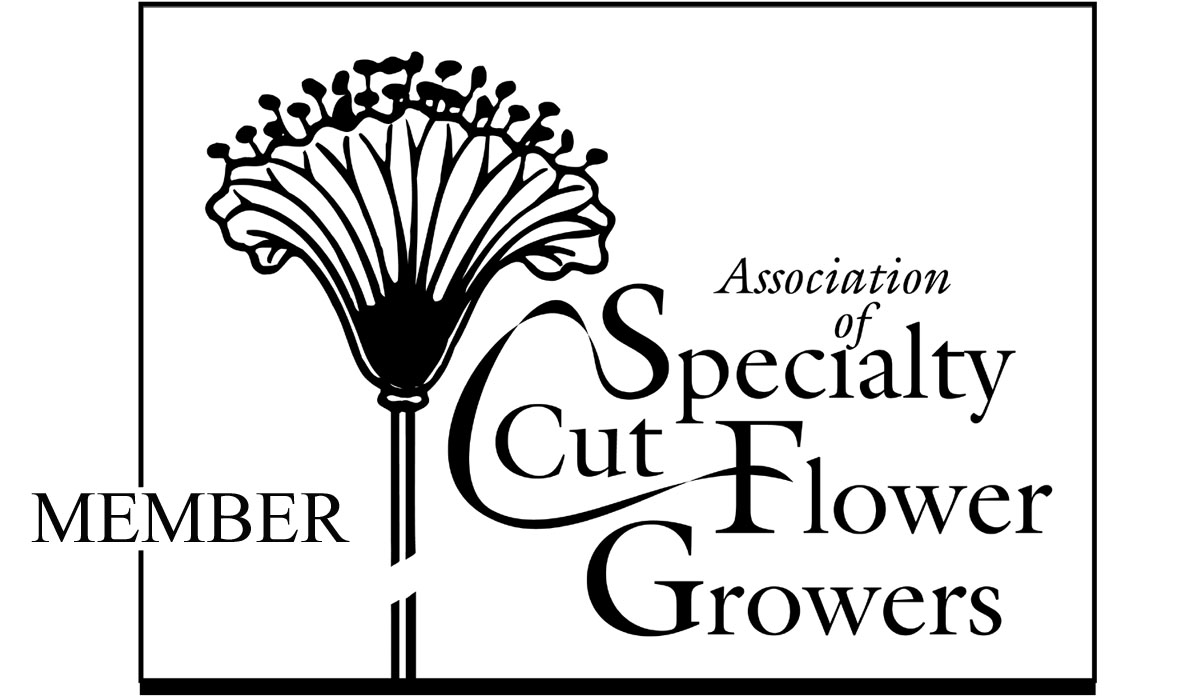Creating Your Own Simple Centerpiece
/Even though I am surrounded by flowers all day every day, I still take the time about once a week to create an arrangement for our dining room table with flowers leftover from the week's orders. Okay, full disclosure... Sometimes its not just the leftovers. Sometimes I keep the most beautiful dahlia for myself.
Follow my detailed, step by step instructions for creating a beautiful, simple arrangement to brighten up your own table!
CHOOSING A VASE
There are so many options for choosing a vase, but the most important thing is to be sure that whatever vessel you choose is watertight. When I create a simple arrangement to give as a gift or for my own dining room table, I prefer vases that have a wide mouth and are about 8-12” tall. Don’t be afraid to think outside of the box when it comes to flower vases! Vintage pitchers, local pottery and even old watering cans make for a unique vases.
CHOOSING YOUR FLOWERS
Its important to incorporate a mixture of different elements to create a balanced and interesting arrangement. Here is my recipe for a well-balanced arrangement:
2-3 focal flowers: peonies or garden roses in the spring; sunflowers and dahlias in the summer and fall are some of my favorites
3-4 tall flowers or spikes: snapdragons and foxglove in the spring; celosia and bells of Ireland in the summer and fall
3-4 round, disc flowers: ranunculus and anemone in the spring; marigold, sweet william, cosmos or zinnia in the summer and fall
4-5 filler flowers: forget me not or phox in the spring; feverfew or globe amaranth in the summer and fall
1-2 whimsical, airy elements: scabiosa in the spring; wild grasses, dill and queen anne’s lace in the summer and fall
4-5 sprigs of greenery: herbs, hostas, dusty miller and lambs ear are home garden staples that are perfect to include in your arrangement. “Weeds” such as honeysuckle and privet are some of my favorite, long-lasting greenery.
Don’t be afraid to add unexpected elements into your bouquet, such as artichokes, vines and unripe berries. Floral arrangements are not limited to just flowers!
WHERE TO BUY FLOWERS
To find the best variety and freshest blooms, research where your local flower farm is located and swing by to grab a bucket of flowers. Slow Flowers and the Association of Specialty Cut Flower Growers are comprehensive nationwide resources for locating local flower growers. If you don’t have a flower farm nearby, visit a farmer’s market in your area - many vegetable farmers also grow cut flowers. Grocery stores with large floral departments often sell single variety bunches of flowers.
DESIGNING YOUR ARRANGEMENT
1. Its a good idea to have a color scheme for your arrangement in mind before you purchase your flowers, or wait and let one specific flower provide the inspiration. For example, a coral charm peony may be the perfect inspiration for a spring arrangement. I would choose colors that will accentuate my peony, such as pale pink ranunculus, white and peach poppies with a yellow center, white sweet peas, pale pink snapdragons, bright green hostas and honeysuckle vines. I prefer not to use flowers that are all exactly the same shade, but rather complementary tones.
2. Once you have your color palette and your flowers, you will prepare your vase. If you’re using a wide mouth vase, use clear tape to create a grid on the top of your vase. This will help your arrangement maintain a solid structure. Fill the vase about ¾ full with warm water. Add flower food or create your own (recipe in “caring for your cut flowers”).
3. Begin with the greenery, placing it around the outer edge of the vase and 1-2 sprigs in the middle of the grid.
4. Next place your focal and tall flowers equidistant around the vase. I prefer using asymmetrical numbers of flowers (for example, 3 peonies). Turn your vase as you work so that each side of the vase receives attention. A lazy susan comes in handy for turning your vase easily.
5. Add clusters of round and filler flowers to fill in the gaps between the focal flowers. Add in one stem at a time so you can see where there are gaps in the arrangement. Sometimes its best to use neutral filler flowers around your focal flower to really let it pop!
6. Finally, add in your whispy, airy elements. Place these to opposite sides of your vase or dangling over the edge. Beware of creating a bunny ear effect though!
7. Once I’ve completed an arrangement, I always walk away for a few minutes so that I can come back with fresh eyes. Almost always I will notice a gap that I didn’t see before or find something that I want to adjust.
CARING FOR YOUR FLOWERS + EXTENDING THE VASE LIFE
1. As soon as you bring home your cut flowers, add warm water and flower food to a clean vase. If you don't have flower food, use 1 quart of water + 2 tbsp lemon juice + 1 tbsp sugar + 1/2 tsp bleach. Cleanliness is of the utmost importance for fresh flowers!
2. Remove any leaves growing low on the stem that may touch the water. Leaves in the water will cause bacteria to grow more quickly. Bacteria is the #1 cause of short vase life of cut flowers.
3. Trim the stems at an angle using a sharp knife or flower snips. A sharp knife is better than scissors, as scissors tend to crush the stems and inhibit their ability to soak up water.
4. Change the water every other day (or as often as possible) to minimize bacteria growth. Keep your flowers in a cool location and out of direct sunlight.
5. Admire your blooms!
Student work from 'An Evening on the Flower Farm' ~ Photography: Taken By Sarah
I'd love to see what beauty you create! Share your arrangements on social media and use the hashtag #flourishflowerfarm
xoxo Niki
















